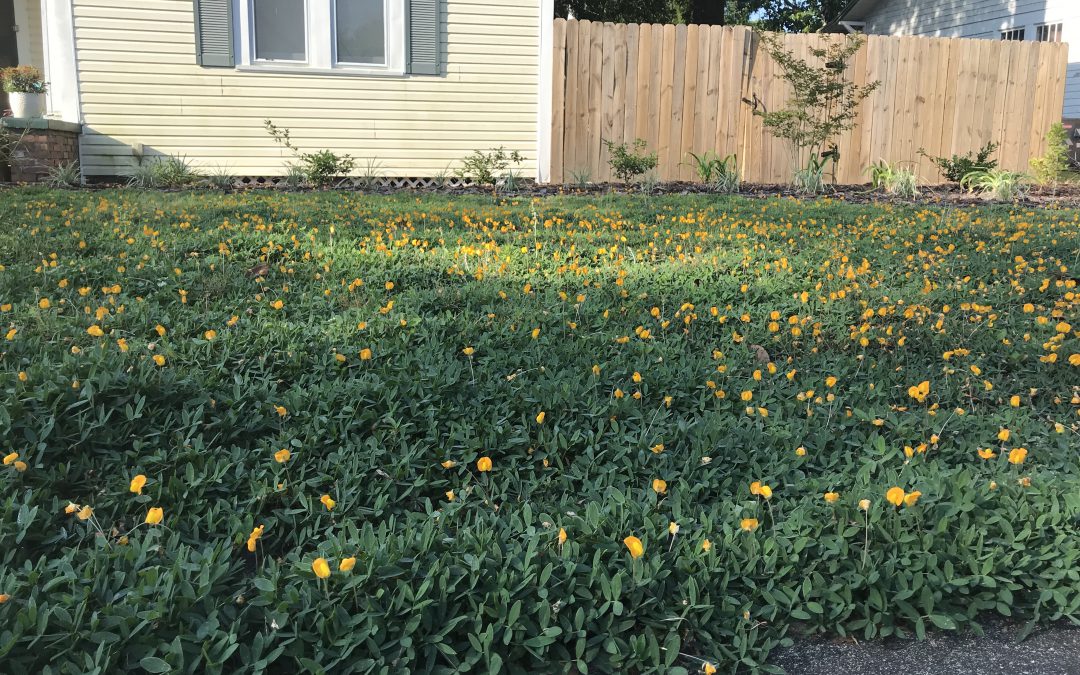
by Matt Lollar | May 5, 2022
Turf lawns provide an excellent groundcover that hold soil in place, filter pollutants, and are beautiful. However, turfgrass may not be your first groundcover choice, due to heavy shade, landscape layout, or just personal preference. In that case, there are a lot of alternative groundcovers on the market. To help determine what groundcovers do best under certain conditions and to provide information on lawncare and groundcover maintenance, this month’s Gardening in the Panhandle LIVE! was all about groundcovers.
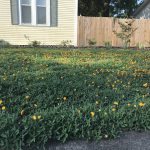
‘Needlepoint’ Perennial Peanut in a yard. Photo Credit: Daniel Leonard, University of Florida/IFAS Extension – Calhoun County
Turfgrass/Groundcover Selection
The University of Florida/IFAS has a long list of publications on alternatives to turfgrass. The comprehensive list can be found at Ask IFAS: Groundcovers.
One of the groundcovers that does well in full sun and has beautiful yellow flowers is perennial peanut. More information on perennial peanut can be found in the publication “Guide to Using Rhizomal Perennial Peanut in the Urban Landscape”.
Groundcover options for the shade include Algerian ivy, Asiatic jasmine, and mondo grass. Read more about these and other shade friendly species at “Gardening Solutions: Groundcovers for the Shade”.
Frogfruit can tolerate full sun and partial shade.
You could also create a wildflower meadow in a sunny spot. More wildflower information is available at Ask IFAS: Performance of Native Florida Plants Under North Florida Conditions.
White clover is a groundcover that may be best suited in a mix with other groundcover species. The publication “White Clover” provides some excellent information on growing this plant.
A number of factors come into play when you are choosing a turfgrass species. Some species are more tolerant of shade than others and maintenance levels are species and variety specific. The “Choosing Grass for Your Lawn” webpages can help answer some common questions. For additional information on turfgrass species a list of EDIS publications and other UF/IFAS websites is available at Ask IFAS: Your Florida Lawn. (Note: Buffalograss is not recommended for Florida.)
Overseeding is not a recommended practice for home lawns, but information is available at the webpage “Overseed Florida Lawns for Winter Color”.
Management of Turf and Groundcovers
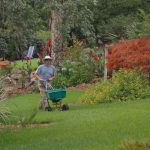
Fertilizing a lawn. Photo Credit: University of Florida
Turfgrass requires the right amount of care. To help maintain a good looking yard, follow the management practices in the publication “Homeowner Best Management Practices for the Home Lawn”.
A soil sample is a good place to start to determine the root of the issues you may have in your lawn. Follow these simple steps to collect and submit a sample for accurate analysis.
Weed management can be difficult in turf and other groundcovers. Cultural, mechanical, and chemical controls can help keep weeds under control. The “Weed Management Guide for Florida Lawns” provides control options for the majority of weeds you’ll encounter in your lawn. More information on weed control in turf alternatives can be found in the publication “Improving Weed Control in Landscape Beds”.
Virginia buttonweed is a common weed that is often difficult to control. Doveweed can also be difficult to control.
The publication “Adopting a Florida Friendly Landscape” outlines the nine principals to help you design, install, and maintain a landscape that will thrive in our climate.
Fertilizer is required to maintain a healthy lawn. A list of lawn fertilization publications and links can be found at Ask IFAS: Lawn Fertilizer.
Lawns in the southeast are susceptible to a number of different diseases mostly thanks to our hot and humid weather. But there are some preventative and curative practices you can implement to help keep disease under control. The “Turfgrass Disease Management” publication answers a lot of questions about disease control.
Past episodes of Gardening in the Panhandle LIVE can be found on our YouTube playlist.
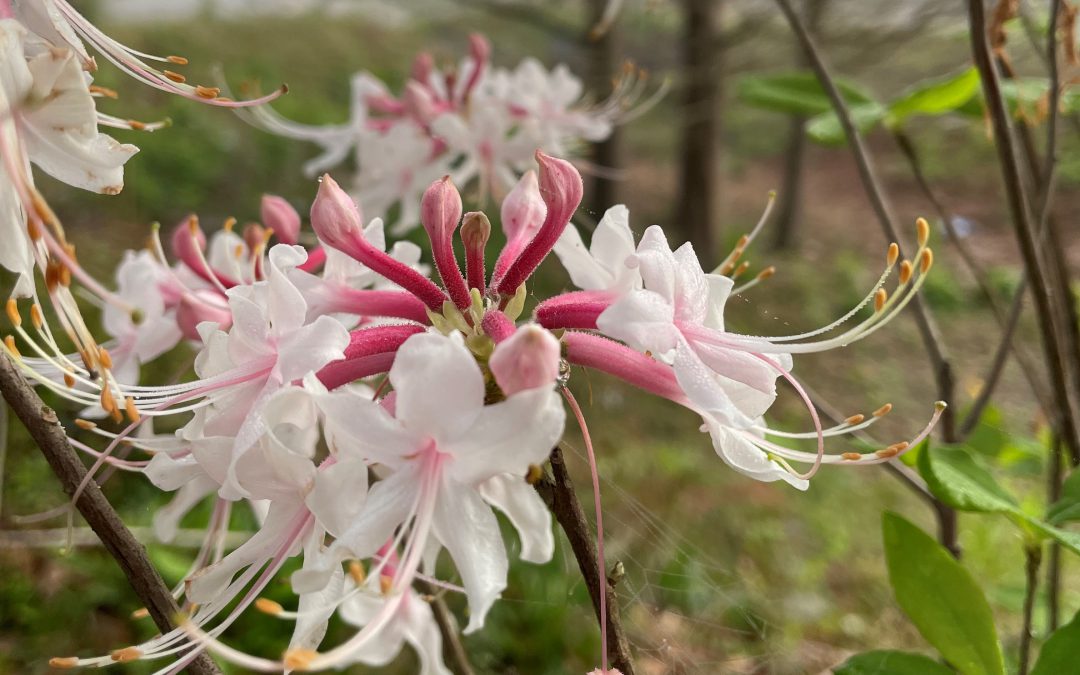
by Matt Lollar | Mar 31, 2022
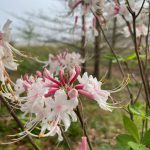
Piedmont azalea (Rhododendron canescens) flowers. Photo Credit: Matt Lollar, University of Florida/IFAS Extension – Santa Rosa County
Native azaleas are stunning this time of year. These deciduous shrubs (and sometimes small trees) often go unnoticed until they bloom in the spring. Three species native to Florida are the piedmont azalea (Rhododendron canescens), the Florida flame azalea (Rhododendron austrinum), and the swamp azalea (Rhododendron viscosum). Piedmont azaleas have whitish to pinkish blooms, Florida flame azaleas have yellow to orange blooms, and the white blooms. All three species have a wonderful honeysuckle-like, sweet fragrance. All three serve as outstanding focal points in the landscape.
Native azaleas and other deciduous azaleas have varying site preferences. Like other azaleas, piedmont and Florida flame azaleas prefer moist, well-drained, acidic soils. However, as the name would suggest, the swamp azalea tolerates wetter locations. All three species prefer partial shade (morning sun and afternoon shade are best) locations and can grow up to 15 feet tall.
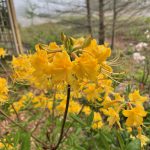
Rhododendron x ‘Aromi Sunny-Side-Up’ in bloom. Photo Credit: Matt Lollar, University of Florida/IFAS Extension – Santa Rosa County
In addition to these beautiful native azaleas, a number of deciduous hybrids have been developed. Aromi hybrids have been bred to tolerate heat and humidity. These azaleas were developed from four native species ()from Gene Aromi in Mobile, AL. He developed more than 100 cultivated varieties (also referred to as cultivars). Popular cultivars in the market include ‘Centerpiece’, ‘Aromi Sunrise’, and ‘Aromi Sunny-Side-Up’.
Deciduous azaleas do not require a lot of fertilizer. A controlled release or slow release, acid forming (specifically formulated for azaleas or blueberries) fertilizer is recommended. A fertilizer nutrient ratio of or close to 2-1-1 (N-P-K) should be selected. Plants should be fertilized in spring or early summer, never in the fall or winter.
More information on azales, native and nonnative, can be found on the UF/IFAS Gardening Solutions website.

by Matt Lollar | Mar 24, 2022

Written by: Donna Arnold, University of Florida/IFAS Extension – Gadsden County
Have you ever noticed mounds of dirt popping up on your lawn, in your cattle pastures, and other places? You just might be experiencing an ant invasion. The Red Imported Fire Ant, (referred to hereafter as RIFA) came from South America in the early 1900s through the port of Mobile, Alabama. Today, they have spread across the US and have become a serious pest causing significant social, environmental, and economic impacts. RIFA mounds can be seen in well-manicured landscapes, but also can nest around tree roots and stumps, as well as under pavement, buildings, and indoor areas. Although RIFA do prey on flea larvae, chinch bugs, cockroach eggs, ticks and other pests, however the problems they create usually outweigh their benefits.
Lifecycle/description.

Red Imported Fire Ant. Photo Credit: University of Florida/IFAS
Size determines the lifespan of RIFA workers. Minor workers may live 30 to 60 days, media workers 60 to 90 days, major workers 90 to 180 days, and queens may live two to six years. Complete lifecycle from egg to adult takes between 22 and 38 days. RIFA are 1/8” to 1/4” long and reddish-brown or black in color.
RIFA usually respond rapidly and aggressively when disturbed. They clamp onto their victims with powerful jaws and sting repeatedly while injecting painful venom. The stings cause a burning sensation and itching blisters that can become infected. Although very uncommon, in severe cases, the stings can produce shock or cause death.
Where one can find RIFA
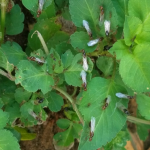
Winged alates preparing for nuptial flight. Photo Credit: Donna Arnold, University of Florida/IFAS Extension – Gadsden County
RIFA frequently invade home lawns, school yards, athletic fields, golf courses, parks, and other recreational areas. Additionally, electrical equipment and utility housing, home gardens, compost piles, mulched flowerbeds, pavement cracks, and the perimeter of bodies of water must all be considered when choosing a method of control.
Management
Two approaches can be taken to effectively manage RIFA.
- Single mound treatments
- Area-wide broadcast applications
Six methods of single mound treatment are available.
Mound Drenches. Large volumes of liquid toxic to ants are poured over a mound. Liquids can range from using several gallons of hot water to insecticides mixed with several gallons of water. This method may not reach the queen, therefore, not preventing colony elimination.
Surface Dusts. Similar to mound drenches, a dust or granular insecticide is applied over the top of the mound and then watered into the soil.
Mound Injections. The use of insecticides that may be pressurized and injected into a mound. Often this method is more expensive, but more effective, than mound drenches; however, more time may be required for this method.
Baits. Baits can be used for both individual mound and broadcast applications. A small amount of the bait is sprinkled around the mound and the ants then forage and bring the bait back to the colony to feed on. This method is slower acting, but more effective than drenching, dusting, or fumigating a mound because the workers will feed the bait to the queen and brood, thus gaining effective control of the colony.
Mechanical Control. Certain mechanical and electrical devices are on the market for controlling fire ants, but the efficacy has not been documented.
Home Remedies. Many homeowners will choose to pour boiling water or ignite flammable liquids over a mound. While these methods may bring about control, they are not recommended because they are both very dangerous, not only to humans, but also to the environment. Several other myths often circulate by the media or by way of word of mouth, often times these methods are anecdotal.
Area-wide broadcast applications
Currently, there are only a few products available for broadcast treatment of large areas. These products are either granular insecticides or baits composed of soybean oil and toxicant on a corn grit carrier. These granules are broadcast over a large area and are carried to the colony and fed to nestmates and the queen. This is a very effective application but does present problems because (1) ants may not find it, (2) do not feed upon the bait, and (3) some baits are light sensitive (as with hydramethylnon) and may inactivate before discovery by the ants. Reinfestation of any treated area, whether by broadcast treatment or individual mound treatment may occur.
As a result, other methods such as Biological Control is widely used to mitigate control of the RIFA.
Supporting information for this article can be found in the UF/IFAS EDIS publications (Managing Imported Fire Ants in Urban Areas) visit https://edis.ifas.ufl.edu/publication/lh059 and Red Imported Fire Ant, Solenopsis Invicta Buren (Insecta: Hymenoptera: Formicidae: Myrmicinae) https://edis.ifas.ufl.edu/publication/IN352.
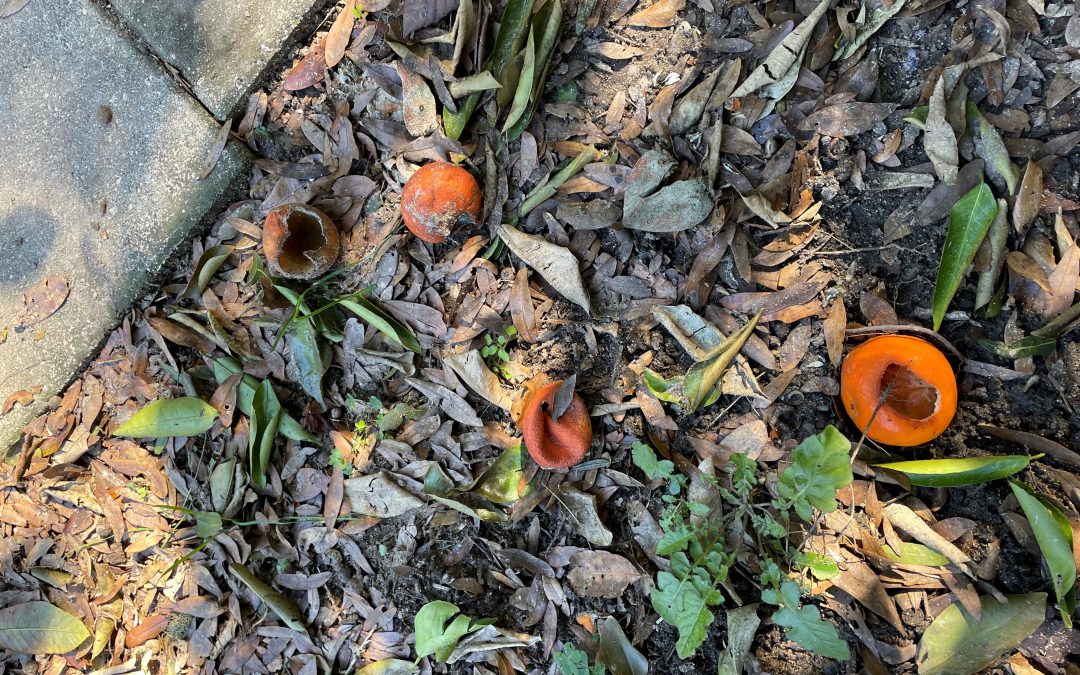
by Matt Lollar | Feb 24, 2022
We often think of plant pests to be only insects. However, plant pests can also be fungal and bacterial diseases, weeds, and even rodents. That’s right, rodents, like squirrels, mice, and rats! One particularly annoying rodent pest of the garden is the roof rat (Rattus rattus, a.k.a. citrus rat, fruit rat, black rat, or gray rat). Roof rats are native to southern Asia. This is the same species that was responsible for carrying the bubonic plague around the world. Roof rats are the most detrimental rodent pest to fruit crops in the state of Florida. In addition to fruit crops, they feed on stored animal and human food. Roof rats live in attics, soffits, walls, and outbuildings. They also chew through wires, pipes, and walls. Roof rats damage some fruit crops (like citrus and melons) by first creating a half dollar sized hole, then they hollow out the fruit. In crops without a rind or peel, like peaches and tomatoes, they just eat large chunks.

Roof rat damage to tangerines. Photo Credit: Matt Lollar, University of Florida/IFAS Extension – Santa Rosa County
Adult roof rats are 12-14 inches long with tails longer than their body length. In Florida they have been identified in three color phases: black back with gray belly; gray back with light gray belly; and brownish gray back with a white or cream colored belly. Other than fruit damage, evidence of infestation includes 1/4-1/2 inch long droppings and rub marks left along travel trails. Roof rats will travel up to 150 yards from their den for food and water. They breed year-round and have litters of 5-8 pups with a gestation period of only 21 to 23 days.
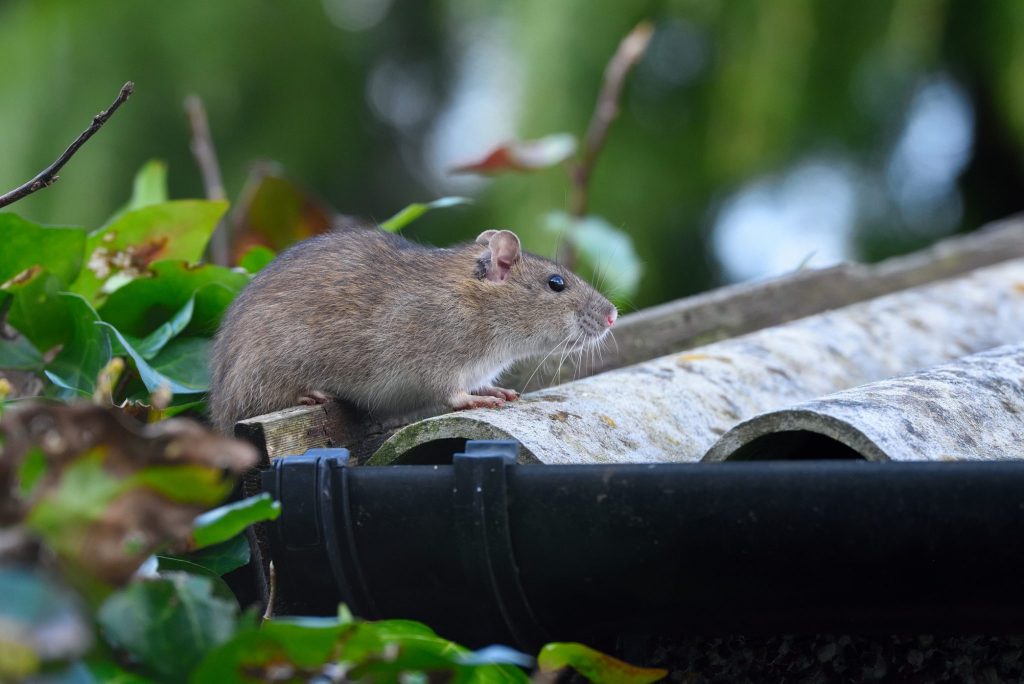
An adult roof rat. Photo Credit: Alabama Cooperative Extension System
A well-thought-out integrated pest management strategy is needed to control and potentially prevent roof rats on your property. Integrated pest management is a strategy consisting of multiple tactics to control a pest. These tactics include scouting (looking for evidence of the pest population); prevention; trapping and exclusion; biological control such as predators; and rodenticides and repellants.
- Prevention – Roof rats are good climbers and swimmers. It is important that fruit trees are planted away from the house, fences, and outbuildings. Make sure to prune fruit trees away from these structures if they can’t be removed or transplanted to another location. Also prune branches from touching the ground to help prevent rats from using trees for cover. Sheet metal (18-24 inches wide) can be loosely wrapped around the tree trunk to keep rats out of the tree.
- Trapping – Rat traps can be placed in several strategic locations. Traps (triggers facing down) can be attached to the trunks of trees. Traps can also be attached to the stringer boards on a fence. Make sure that traps are only set from dusk to dawn to avoid killing non-target species like birds and squirrels. Leave traps in place for at least a week before moving them because roof rats are cautious of new objects.
- Rodenticides & Repellants – Poisons should only be used after all other control methods are exhausted. Most products are very toxic to humans, pets, and wildlife. If used outdoors, poison baits must be placed in tamper-resistant bait stations.
- Biological Control – Rat snakes and king snakes are good natural predators for roof rats. If you have more open spaces you may consider building a barn owl house. Barn owls and hawks are also natural predators. You may also consider getting a farm cat to help control the population. Cats will kill juvenile rats, but have trouble catching adult rats.
Hopefully you will never have to encounter roof rats or other rodents invading your yard and house. However, if they do come around more information is available in the publication “Pests in and Around the Southern Home“.
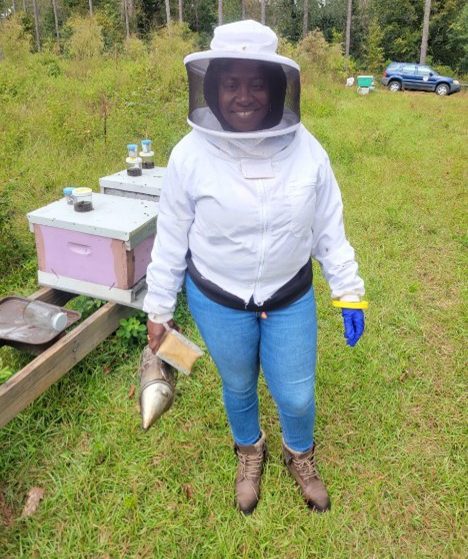
by Matt Lollar | Feb 10, 2022
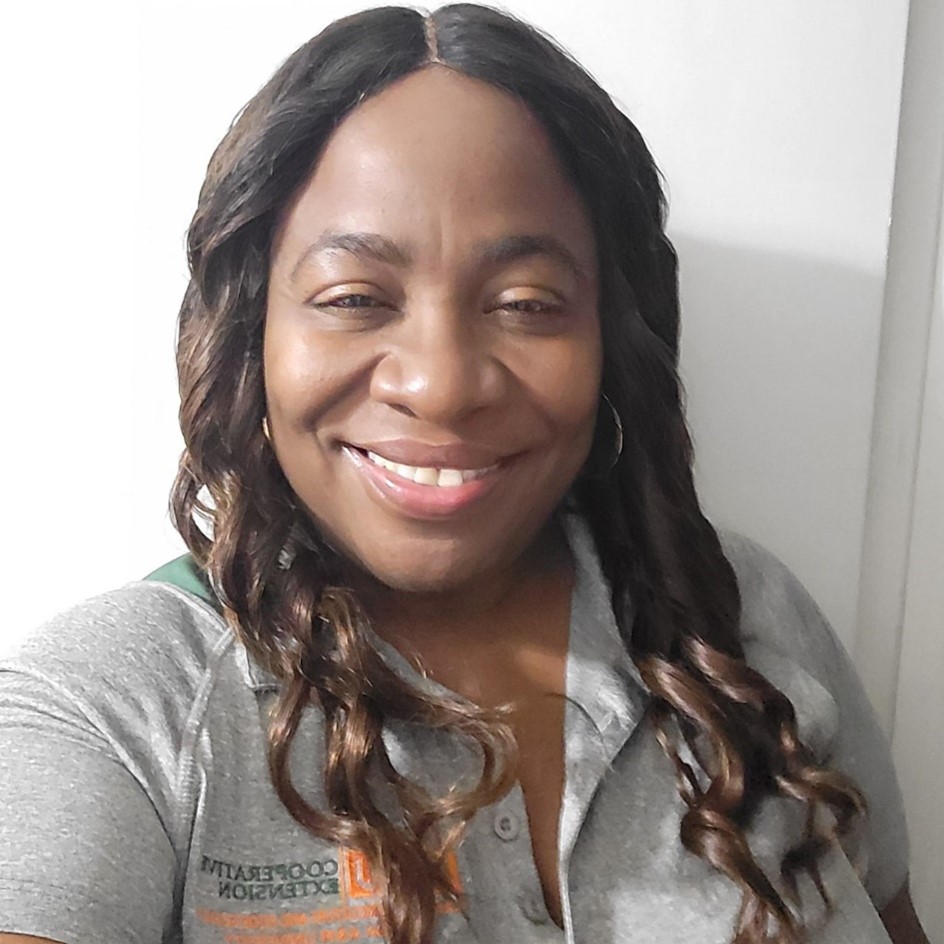
Donna Arnold, University of Florida/IFAS Extension – Gadsden County
Donna Arnold is the Small Farm and Residential Horticultural Agent for the Gadsden County since January, 2022. Her main role as an agent is to provide educational programs, related to sustainable agriculture to farmers in Gadsden County north Florida. These programs in small farms and residential horticulture include: best management practices, production, harvesting, marketing, and sustainability issues. In addition, she will provide direction and leadership for the Master Gardener Program also in the County.
Donna holds a Master of Science Degree in Entomology form Florida Agricultural and Mechanical University (FAMU). In her research she examined the prevalence of Solenopsis invicta virus 3 (SINV-3) in fire ant alates collected in north and central Florida. Previously, she was employed to the Oberlin High School Kingston via Ministry of Education Youth and Culture in Jamaica for over 20 years where she was an Agricultural Sciences teacher and the Head of the Agriculture Department. Her job duties involved managing the school tutorial farm and supervision of members in the agriculture department. She also participated in many on the job trainings and earned certificates in the field of Agriculture and was a part of the National 4-H clubs.
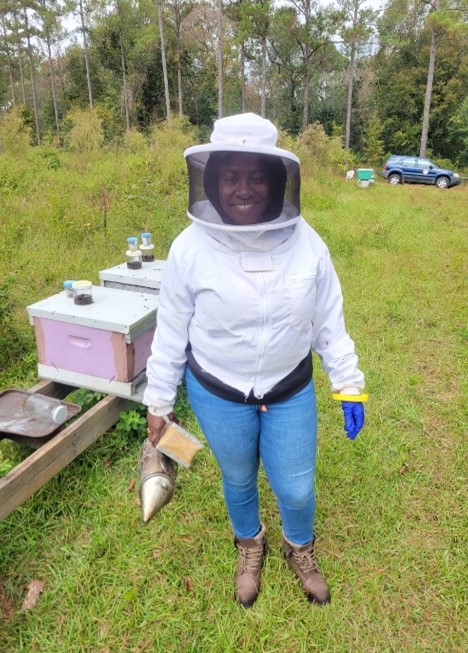
Donna Arnold in Beekeeper Jacket
Her experience in Agriculture began at an early age; she was raised in a small farming community in East Rural St Andrew, nestled in the blue mountain regions of Jamaica. Farming was the main source of income there – Coffee and vegetable crops predominately grown. Since agriculture was embedded in her from a tender age, this act as a catalyst to propelled her to learn more about the pedagogical aspects. Donna’s formal agricultural experience began at Elim Agricultural School, now known as Sydney Pagan Agricultural School, where she was awarded a certificate in General Agriculture.
She later worked in extension with Rural Agricultural Development Authority under the Ministry of Agriculture. During her tenure she saw the need to upgrade educationally to better served her farmers in rural communities, therefore, she pursued an Associate of Science degree in Agriculture (ASc.), and a Bachelor of Technology in Food System Management and Agriculture Production (BTECH) respectively, at the College of Agricultural Science and Education (CASE). After which, she pursued a Diploma in Teacher Education at the Short wood Teachers College.
With the knowledge and skills garnered this led to her understanding that agriculture plays a vital role in food security because she believes a country is not independent until it can feed itself. It was always Donna’s intention to continue working in Agricultural extension, there she believes she can make a positive impact on farmers lives since they are the drivers of food production.
During her spear time one can find Donna tending plants, working with honey bee research and, watching home and garden television series. Her motto is “attitude is a little thing that makes a big difference” by Winston Churchill
















